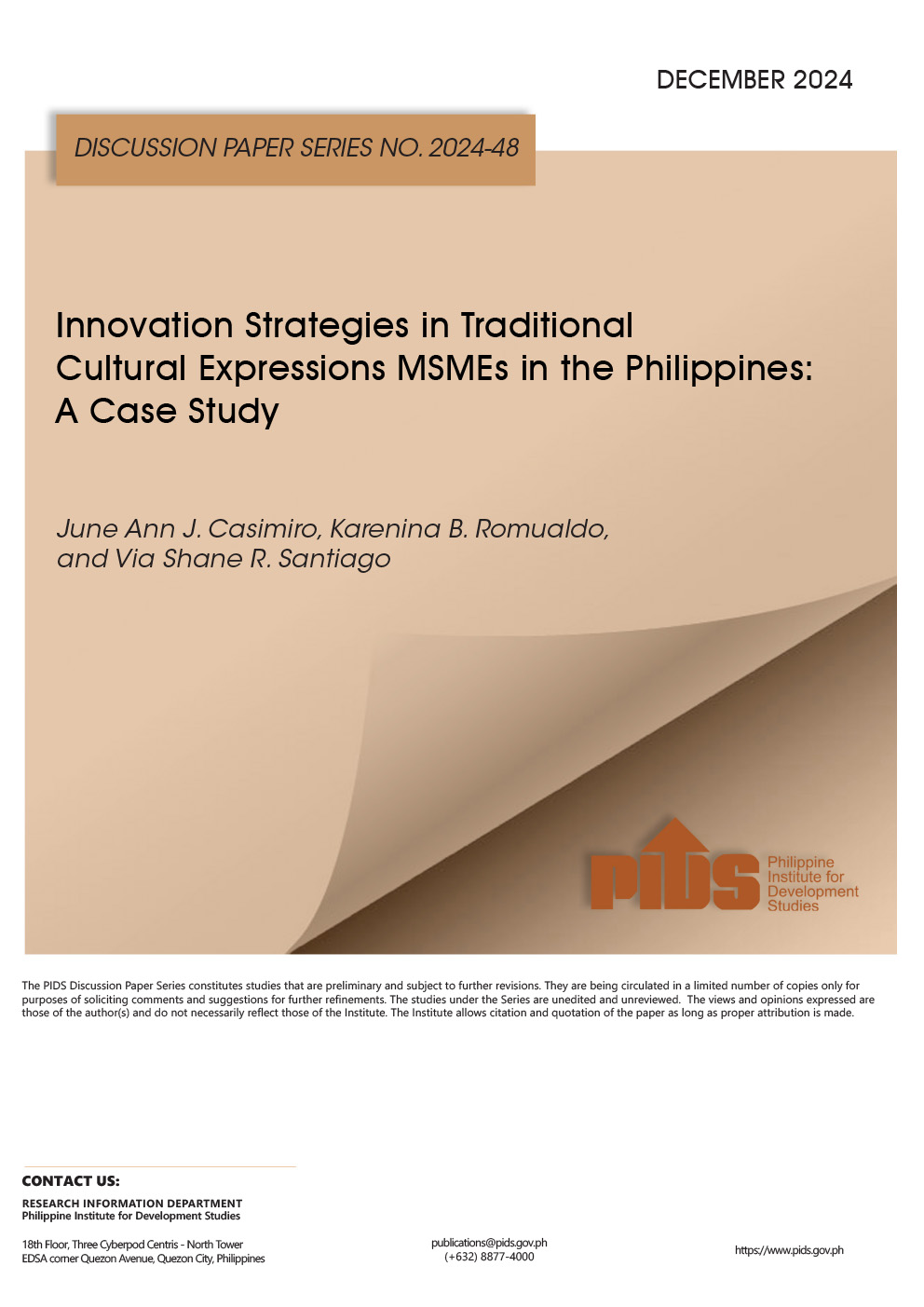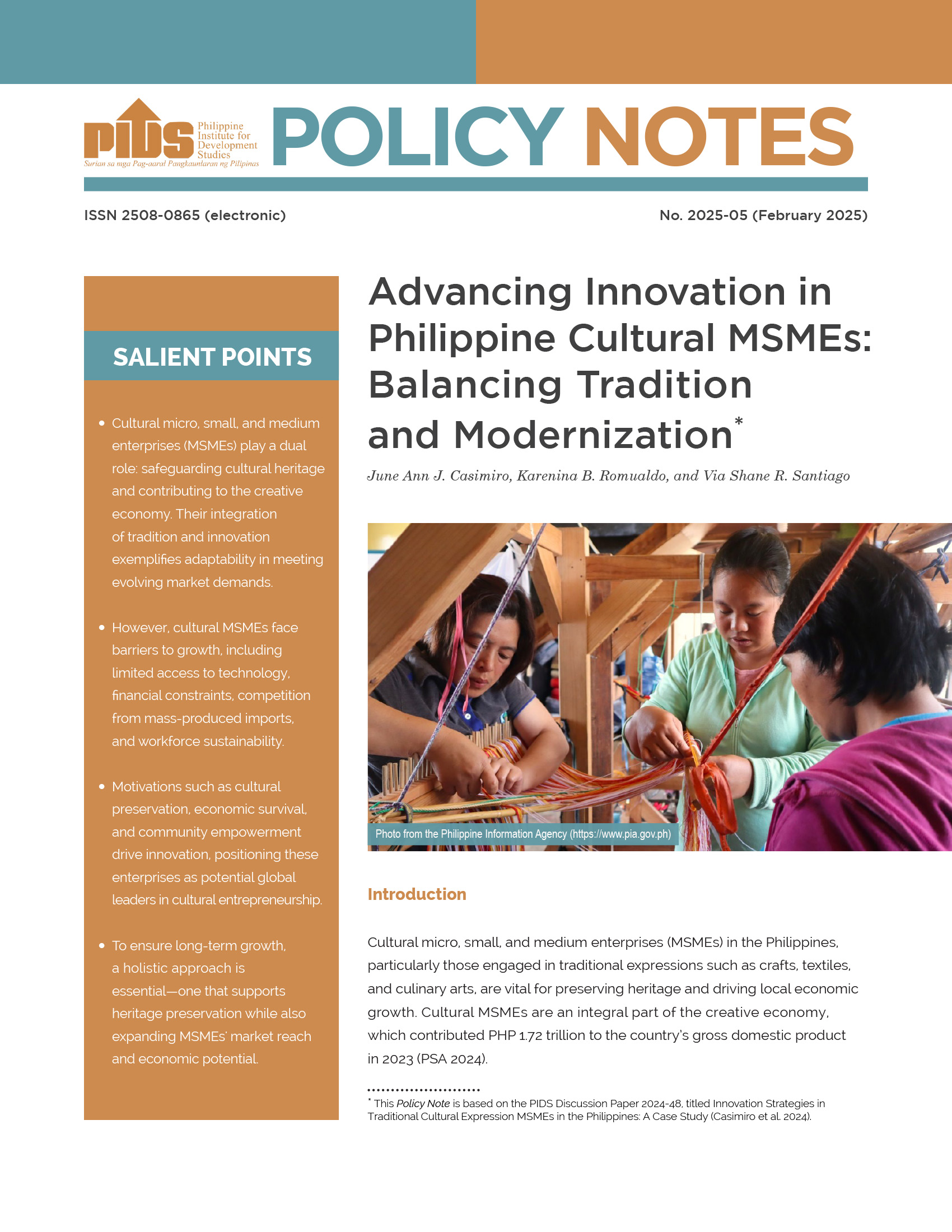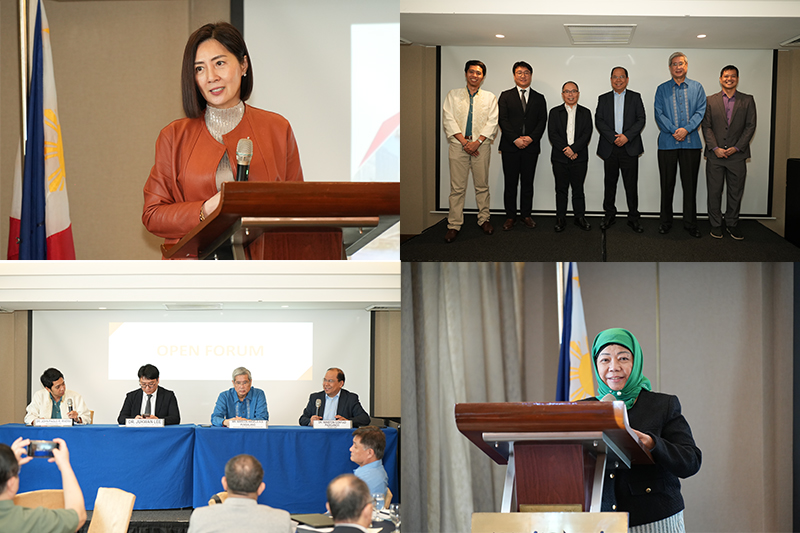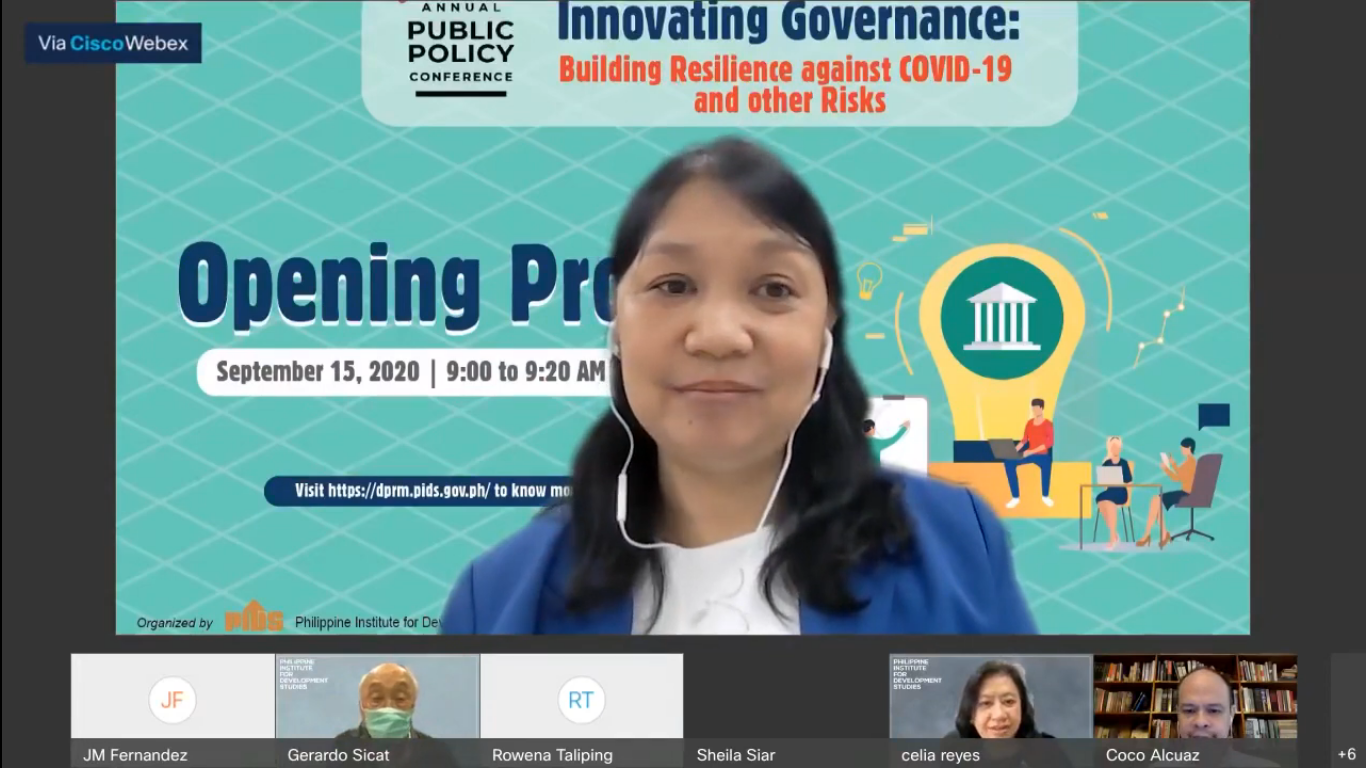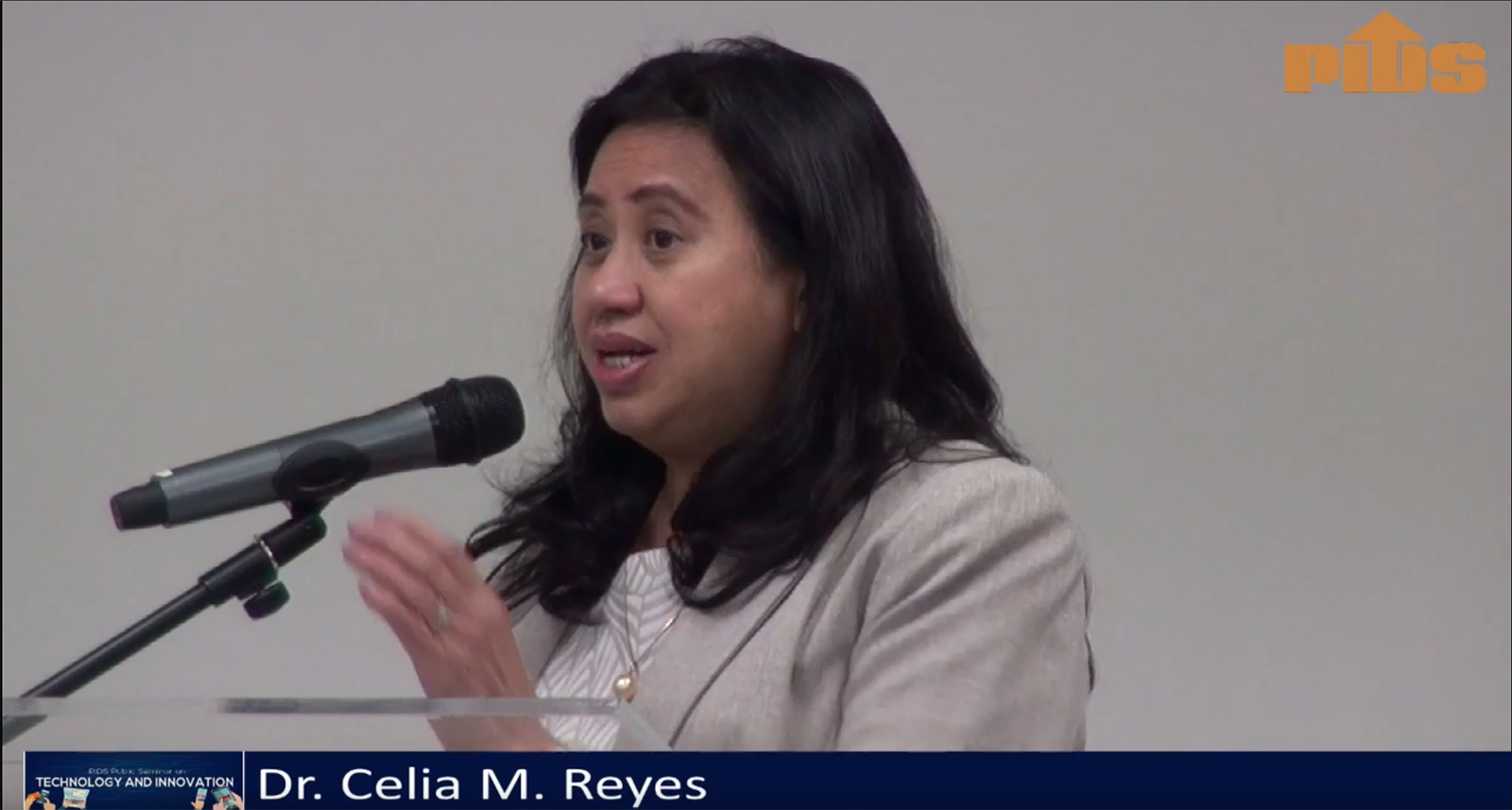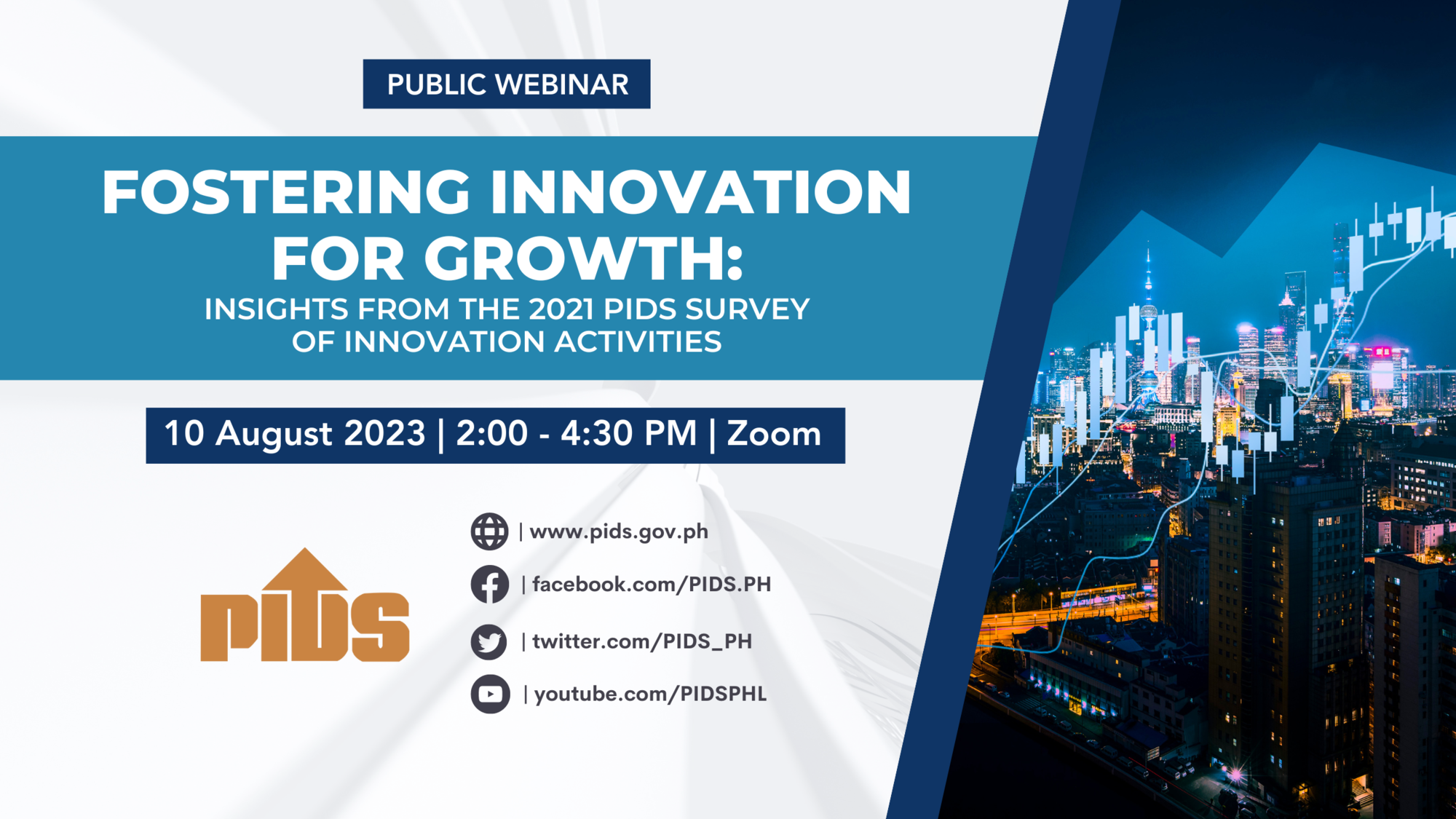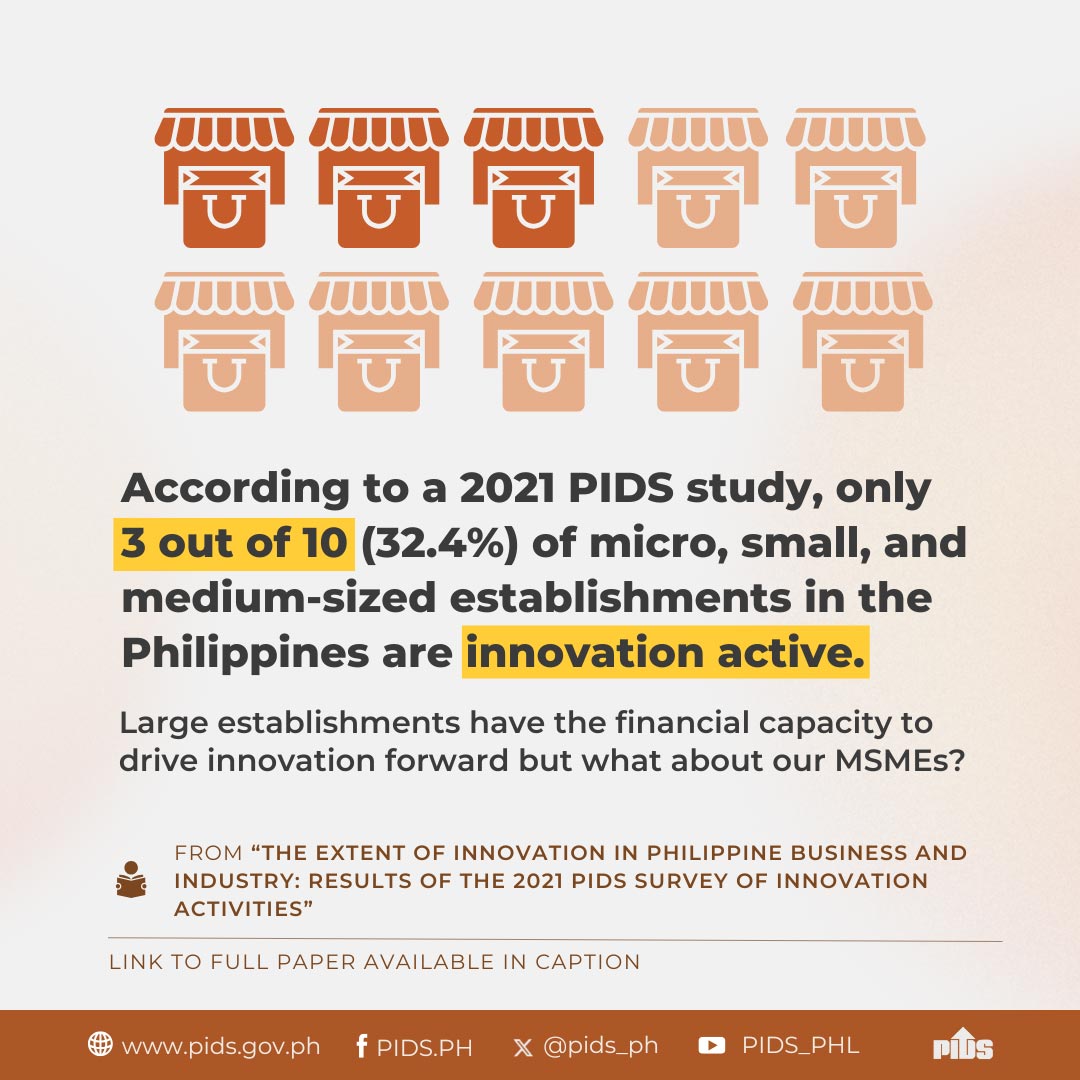
Long-term national development relies on innovation. Progress in science and technology, and innovation is necessary to achieve sustained economic growth. Innovation improves firm competitiveness and enables access to global markets. Simultaneously, innovation helps expand job opportunities and introduce new industries to the economy.
Although the Philippines has recorded a high-growth path in the past years, many analysts contend that the country could achieve more if it can improve its innovation capacity, which unarguably remains wanting. In the 2014 Global Innovation Index (GII) Report, co-published by Cornell University, INSEAD, and the World Intellectual Property Organization, the Philippines ranked 100th among 143 countries. Compared with its Southeast Asian neighbors, it is trailing behind Singapore (7th), Malaysia (33rd), Thailand (48th), Viet Nam (71st), and Indonesia (87th).
This lackluster performance can be linked to poor investment in research and development (R&D). Philippine investment in R&D hovers at a level of 0.11 to 0.14 of the gross domestic product (GDP), one of the lowest in Asia. In contrast, other developing countries invest nearly two percent of their GDP for science and technology (S&T). A pressing concern is also increasing the country’s S&T human resource pool to offset the continuing migration of S&T graduates abroad owing to more lucrative economic and professional opportunities.
PIDS studies have delved on the reasons that impede firms to innovate. A case study on the automotive manufacturing industry by Francis Quimba and Maureen Ane Rosellon, PIDS research associates, reveal that the difficulty lies in translating the awareness of the importance of knowledge and technology into actual firm innovation. Meanwhile, a volume of work by Epictetus Patalinghug, Jose Ramon Albert, Rafaelita Aldaba, and Fatima del Prado, shows a range of factors that determine or impede decisions to innovate. These factors include incentives, firm capabilities and resources, market factors, and the investment environment. Patalinghug, a PIDS consultant, notes that policymakers must create incentives like a stronger intellectual property rights law, standardized quality system, and the availability of technology transfer programs. Meanwhile, Albert and Aldaba, both PIDS senior research fellows, and del Prado, a PIDS research specialist, emphasize the need to ease barriers to trade. The government has to be vigilant about stamping out anticompetitive practices. At the same time, it needs to address issues of inadequate physical and institutional infrastructure.
Currently, R&D investments are shouldered by a large margin by the Filipino taxpayers. Troublingly, despite government efforts to encourage firm innovation through initiatives like the Small Enterprises Technology Upgrading Program, Albert and his co-researchers note that the influence of government R&D and technology resource centers is still very weak.
The case for building an innovation-centered mindset does not rest alone on the cooperation between the private and public sectors. Strong linkages and coordination between research institutions and universities, and industry associations should be established, and collaborations to share knowledge and translate that knowledge into useful technologies should be encouraged. These should be complemented by well-crafted and implemented technology promotion and utilization programs that facilitate easy access to technology for the majority of the population.
You may access these and other PIDS studies on Innovation from the SocioEconomic Research Portal for the Philippines. Simply type the relevant keywords in our Search box.
Does Innovation Mediate Good Firm Performance?
Innovative Behavior of Local Firms Results of the 2009 Pilot Survey of Innovation Activities Conducted under the DOST-IDRC Project: Towards an Innovation-Led Development Path in the Philippines
The Philippine National Innovation System: Structure and Characteristics
A Century of Rice Innovations
Determinants of Locating R&D Activity in the Philippines: Policy Implications
Innovation in the Automotive Sector of the Philippines
Trade Reforms, Competition, and Innovation in the Philippines
Strengthening Sources of Knowledge/Technology to Promote Innovation: The Case of CALABARZON
Why Some Firms Innovate and Why Others Do Not?
Although the Philippines has recorded a high-growth path in the past years, many analysts contend that the country could achieve more if it can improve its innovation capacity, which unarguably remains wanting. In the 2014 Global Innovation Index (GII) Report, co-published by Cornell University, INSEAD, and the World Intellectual Property Organization, the Philippines ranked 100th among 143 countries. Compared with its Southeast Asian neighbors, it is trailing behind Singapore (7th), Malaysia (33rd), Thailand (48th), Viet Nam (71st), and Indonesia (87th).
This lackluster performance can be linked to poor investment in research and development (R&D). Philippine investment in R&D hovers at a level of 0.11 to 0.14 of the gross domestic product (GDP), one of the lowest in Asia. In contrast, other developing countries invest nearly two percent of their GDP for science and technology (S&T). A pressing concern is also increasing the country’s S&T human resource pool to offset the continuing migration of S&T graduates abroad owing to more lucrative economic and professional opportunities.
PIDS studies have delved on the reasons that impede firms to innovate. A case study on the automotive manufacturing industry by Francis Quimba and Maureen Ane Rosellon, PIDS research associates, reveal that the difficulty lies in translating the awareness of the importance of knowledge and technology into actual firm innovation. Meanwhile, a volume of work by Epictetus Patalinghug, Jose Ramon Albert, Rafaelita Aldaba, and Fatima del Prado, shows a range of factors that determine or impede decisions to innovate. These factors include incentives, firm capabilities and resources, market factors, and the investment environment. Patalinghug, a PIDS consultant, notes that policymakers must create incentives like a stronger intellectual property rights law, standardized quality system, and the availability of technology transfer programs. Meanwhile, Albert and Aldaba, both PIDS senior research fellows, and del Prado, a PIDS research specialist, emphasize the need to ease barriers to trade. The government has to be vigilant about stamping out anticompetitive practices. At the same time, it needs to address issues of inadequate physical and institutional infrastructure.
Currently, R&D investments are shouldered by a large margin by the Filipino taxpayers. Troublingly, despite government efforts to encourage firm innovation through initiatives like the Small Enterprises Technology Upgrading Program, Albert and his co-researchers note that the influence of government R&D and technology resource centers is still very weak.
The case for building an innovation-centered mindset does not rest alone on the cooperation between the private and public sectors. Strong linkages and coordination between research institutions and universities, and industry associations should be established, and collaborations to share knowledge and translate that knowledge into useful technologies should be encouraged. These should be complemented by well-crafted and implemented technology promotion and utilization programs that facilitate easy access to technology for the majority of the population.
You may access these and other PIDS studies on Innovation from the SocioEconomic Research Portal for the Philippines. Simply type the relevant keywords in our Search box.
Does Innovation Mediate Good Firm Performance?
Innovative Behavior of Local Firms Results of the 2009 Pilot Survey of Innovation Activities Conducted under the DOST-IDRC Project: Towards an Innovation-Led Development Path in the Philippines
The Philippine National Innovation System: Structure and Characteristics
A Century of Rice Innovations
Determinants of Locating R&D Activity in the Philippines: Policy Implications
Innovation in the Automotive Sector of the Philippines
Trade Reforms, Competition, and Innovation in the Philippines
Strengthening Sources of Knowledge/Technology to Promote Innovation: The Case of CALABARZON
Why Some Firms Innovate and Why Others Do Not?

